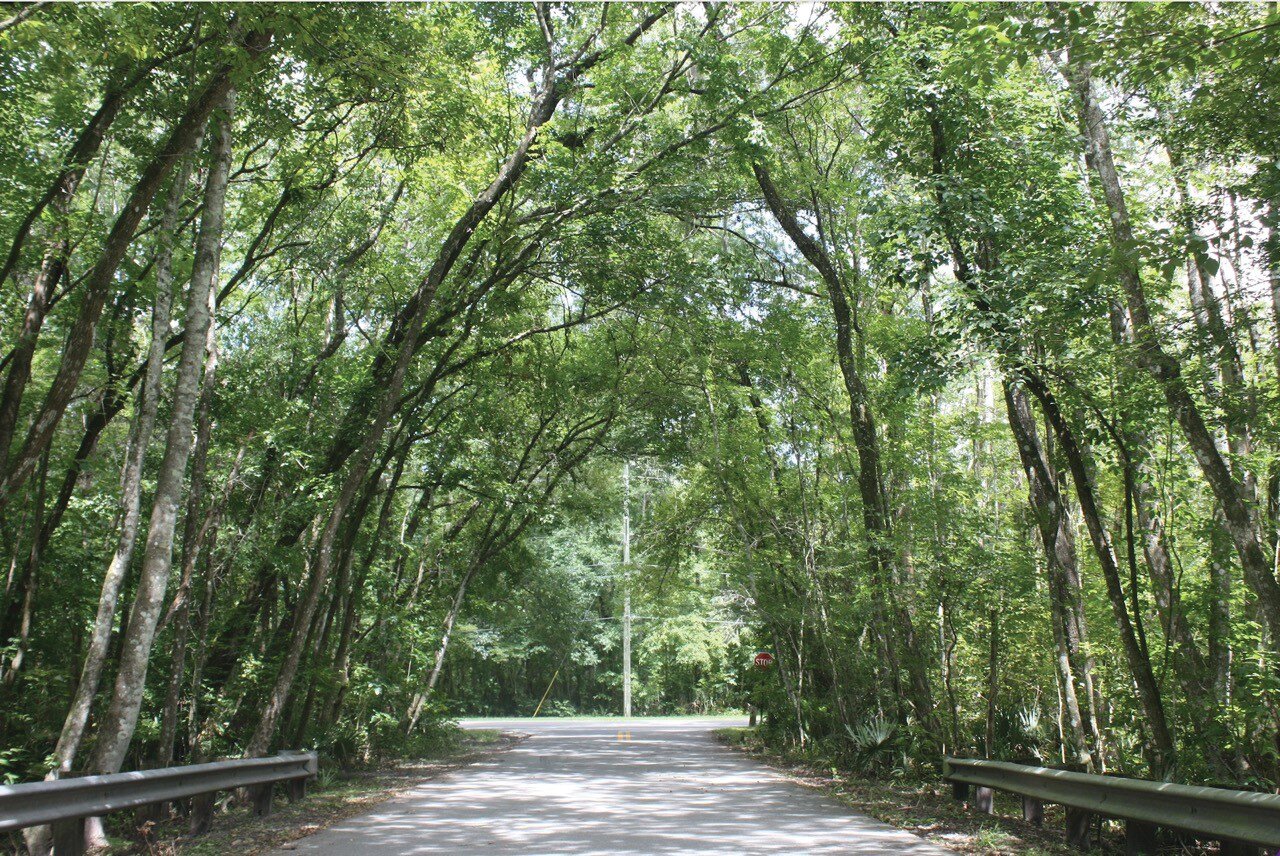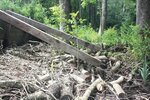Residents: Grant money won’t address every problem in Orange Park
Trees, limbs, vegetation could clog flowing water during storms
ORANGE PARK – The Town was recently awarded a $7 million grant from the Florida Department of Environmental Protection’s Statewide Flooding and Sea Level Resilience Plan for 2023-2024 and it will …
This item is available in full to subscribers.
Attention subscribers
To continue reading, you will need to either log in to your subscriber account, below, or purchase a new subscription.
Please log in to continueDon't have an ID?Print subscribersIf you're a print subscriber, but do not yet have an online account, click here to create one. Non-subscribersClick here to see your options for subscribing. Single day passYou also have the option of purchasing 24 hours of access, for $1.00. Click here to purchase a single day pass. |
Residents: Grant money won’t address every problem in Orange Park
Trees, limbs, vegetation could clog flowing water during storms
ORANGE PARK – The Town was recently awarded a $7 million grant from the Florida Department of Environmental Protection’s Statewide Flooding and Sea Level Resilience Plan for 2023-2024 and it will use it to address four culverts – Plainfield Avenue at Johnson Slough, Nelson Drive at Dudley Branch, Nelson Drive South on Johnson Slough and Carnes Street on Johnson Slough.
However, grant monies don’t address all concerns of residents living along the waterways. They said there are many factors to consider in the area bordering Doctors Lake prone to flooding during rainstorms.
Chad and Bridgett Dew, a married couple who’ve lived on Nelson Drive for nine months, and Tyler Jacquin, a longtime resident of the neighborhood that grew up on nearby Birdwood Lane, outlined their concerns for Johnson Slough and Dudley Branch.
Their biggest concern is the hundreds of branches, logs and other debris, particularly in Johnson Slough, creating backlogs that prevent water from flowing freely. Another potential issue is leaning trees and branches in the storm-prone area, some showing signs of deterioration or decay.
“One of these days, a tree is going to fall and kill a pedestrian. Who is going to be responsible then?” Bridgett Dew asked.
Some trees may pose a risk factor, but the town’s Public Works Department has taken all proper measures to address overhanging vegetation, and the town has a healthy financial fund for removing dead trees, said town manager Sarah Campbell.
Many trees, large and small, lean at an angle on and around Johnson Slough. A group of large branches corrals near Nelson Drive and Plainfield Drive. The towering branches that seemingly interlock don’t seem to pose a threat, but it’s something for residents to watch in a storm-prone area.
According to Campbell, the town focuses on trees that are on their property or threaten a power line or structure.
“If it’s threatening vacant land, it’s lower priority,” she said.
Croce said that Public Works has a contract with a continuing services company that helps remove dead trees and any tree in danger of falling that could put the community at risk.
It will likely be months before work on the culvert work begins, and the infrastructure improvements could take years to complete. A grant must be drafted, approved and finalized. Then the town’s engineering consultant must develop a design before it sends it out for bidding.
The paperwork process is time-consuming in itself. Work may not begin until 2024. After labor begins, the project’s completion could take several years.
“For most federal and state grants, (work) could take two to five years,” Croce said.
The town of Orange Park and the neighborhood bordering Bradley Park and Doctors Lake wrestle with infrastructure in the historic, established neighborhood defined by beautiful homes surrounded by towering trees and low-lying swamp land. The community must be mindful that the Public Works’ Stormwater Program only has three full-time employees and is tasked with several other duties.
A riverbank stabilization along River Road is ongoing, and the clearing of the creek across from Clarke House Park on the other side of Kingsley Road has been active for six months where erosion was so bad that some swimming pools were threatened, Campbell said.
Meanwhile, other projects are being completed.
A list of other infrastructure improvements was listed from the Jones-Edmunds Engineering Firm.
A raise of 35 cents a household in Orange Park was also discussed, which would fund the salaries and expenses of the three full-time Stormwater Crew employees through Stormwater Utility Fees.
Another hike could allow for two additional.
Both items are in the early discussion phase and have not been taken to vote. Decision-makers and taxpayers must consider the price they are paying and the service level they are receiving.
“The big issue is that we have a three-man crew for the town. It’s really challenging because there needs to be a balance between home much taxpayers spend on stormwater utility fees and the level of service they are getting. It’s tough because all of the services cost more money nowadays with inflation. The cost of doing business has increased, so that’s a concern for the residents, and the council wants to keep costs low as possible (while also maintaining the best level of service possible),” Croce said.
It’s a balancing act.
Campbell and Croce agree adding two new employees would benefit the town. They also said that once the Johnson Slough Roadways and Culvert Improvements project is completed, it should relieve stress in the flood-prone area.
“Plainfield Road is very low, so when the water gets high, there is a sheet flow over the road. The project involves raising the road to an elevation that accommodates sea level rise and creates a larger culvert so that more water can pass under the road,” Campbell said.
On Nelson Road, the focus is on constructing larger culverts, providing more water capacity to pass underneath the road.
There’s also the possibility a series of small bridges would be used instead of the culverts, which would be more expensive but would also provide a path for a kayak or canoe to reach Doctors Lake.
Remaining dollars from the American Rescue Plan Act of 2021 for the town, totaling $2 million, which would need to be obligated by 2024 and spent by 2026, may also be allocated to help match funds from the FDEP’s Resilience Plan.
Upgrades could also end up costing less than $7 million. If that were the case, the town could allocate the funds to another infrastructure project.
Campbell believes completing the grant project will be a significant step for the town.
“I think (the grant project) is going to eliminate a lot of roadway flooding during storms so that people can get in and out of their homes and water can get in and out of the system more easily,” she said.
The branches, logs and swampy muck is a separate issue and an animal of their own, and some types of major cleanup projects at Johnson Slough and Dudley Branch would need to passed through the Capital Improvements Plan, which would require an engineering firm to design a plan before moving forward and a contractor to complete the work.
Other areas of Johnson Slough and Dudley Crew are difficult or nearly impossible to access for the Stormwater Crew, and finding specialty equipment to rent isn’t easy, either. On the other hand, Croce said that hiring a contractor to complete the job is not allocated in the town’s regular operating budget.
The swampy area is tricky territory for the town.
One piece of equipment has already been tried and failed. Croce said the Mobile Menzie Muck walking excavator sank due in Johnson Slough to the thick layers of mud, debris and growth.
Johnson Slough and Dudley Creek are major waterways through the town, and the area is on the Stormwater Crew’s regular maintenance schedule and is a top-priority concern. Visiting the sites is also dependent on the accessibility of the affected areas and the priority level at the time compared to other important projects for the town, according to Campbell.
“We have a schedule to go through Dudley and Johnson yearly and during (hurricane season) to clean out sections as well as we can. Some areas have not been cleaned out because they are difficult to access,” Croce said.
Once culvert upgrades are completed, Croce said water would be able to flow more freely, and debris would be able to be more regularly maintained. Clearing debris would provide a positive environmental impact on the area.
Among creatures that live in and around the creek include woodpeckers, turtles, otters, beavers, other species of birds, and fish large and small. Crabs and other aquatic fish and animals live nearby in a corridor between a populated suburban neighborhood, a major creek system, Doctors Lake and the St. Johns River.
“It would allow for cleaner water, promote the growth of natural Florida vegetation and allow it to survive and thrive. I think it would be a huge environmental benefit to clean those areas of dead debris and exotic, invasive vegetation not native to Florida,” he said.
Campbell said Orange Park had already completed $1 million worth of dredging on Dudley Branch from Kingsley Road to Shaw Street after Hurricane Irma.
“We’ve been working really hard since (Hurricane) Irma in 2017 and made a lot of progress,” she said.
“Dudley Branch and Johnson Slough need a lot of work. There’s more to do,” she admitted. “Only time will tell,” Campbell said.















